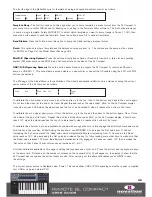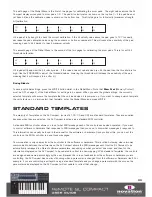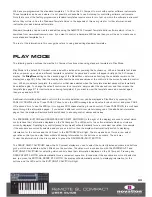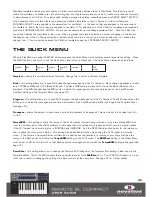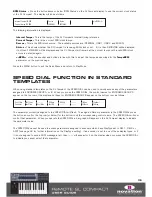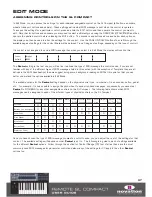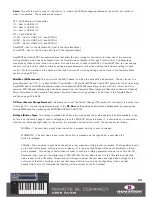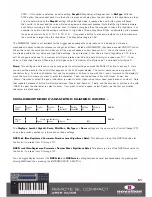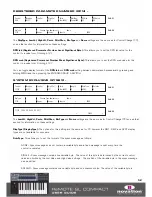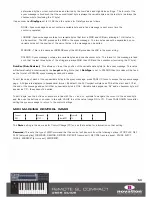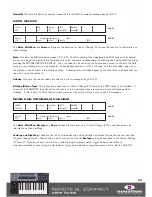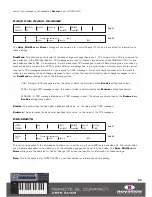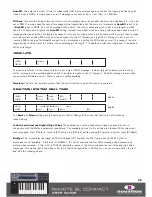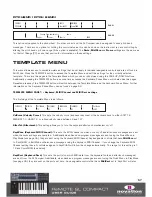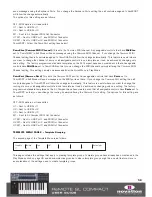
The sixth page of the Global Menu is the first of two pages for calibrating the drum pads. The eight values across the SL
Compact display correspond to drum pads 1-8. The pad hit velocity value is shown on the top line (‘---‘ if the pad has not
yet been hit) and the calibration value is shown on the bottom line. This first page is for full velocity (maximum strength
hit) calibration:
Hit a pad at full strength to check the current calibration. If the hit velocity value above the pad goes to 127 too easily,
decrease the pad calibration value using the encoders or buttons underneath. This will reduce the sensitivity of the pad,
meaning need to hit it harder to reach maximum velocity.
The seventh page of the Global Menu is the second of the two pages for calibrating the drum pads. This is for soft hit
threshold calibration:
Hit a pad softly and view the hit velocity value. If the value does not update when you hit the pad then the threshold is too
high. Use the ENCODERS to adjust the threshold values. Lowering the threshold will increase the sensitivity of the pad
meaning that it will respond to a softer hit.
Saving Globals
To save any Global settings, press the WRITE button whilst in the Global Menu. Note that
Mem Prot
(Memory Protect)
must be OFF on page 2 of the Global Menu for settings to be saved. When you save the global settings, the currently
selected template will become the template that the unit loads when it is powered up. If you want to change which template
the unit starts up on, simply select that template, enter the Global Menu and press WRITE.
STANDARD TEMPLATES
The majority of Templates on the SL Compact (currently 1-33, 35 and 36) are ‘standard’ templates. They are so-called
because when they are selected, the SL Compact functions as a standard MIDI controller.
A standard MIDI controller allows you to set what MIDI message each of its controls sends when operated. If you want
to control software or hardware that responds to MIDI messages then you need to know what messages it responds to.
This information can usually be found in the manual for the software or hardware. Once you know this, you can set the
controls on the MIDI controller to send those messages.
Communication is only one-way from the controller to the software or hardware. This is unlike Automap, where two-way
communication between the software and the SL Compact allows the MIDI messages sent from the SL Compact to be
automatically remapped to different software parameters, depending on what you select on-screen, and then for the
information displayed on the SL Compact to be updated to reflect the new mapping. With standard Templates, the controls
are assigned and named accordingly by the user. Because there is no feedback from the software or hardware you are
controlling, the SL Compact has no way of knowing when a parameter is changed from the software or hardware itself. For
example, if you are controlling a soft-synth using a standard Template and you change a parameter with the mouse, the
parameter value displayed on the SL Compact will not update to reflect that change.
43
127
64
---
64
---
64
---
64
---
64
---
64
---
64
---
64
40
20
---
20
---
20
---
20
---
20
---
20
---
20
---
20
Summary of Contents for ReMOTE SL COMPACT
Page 1: ...FA000 01...














